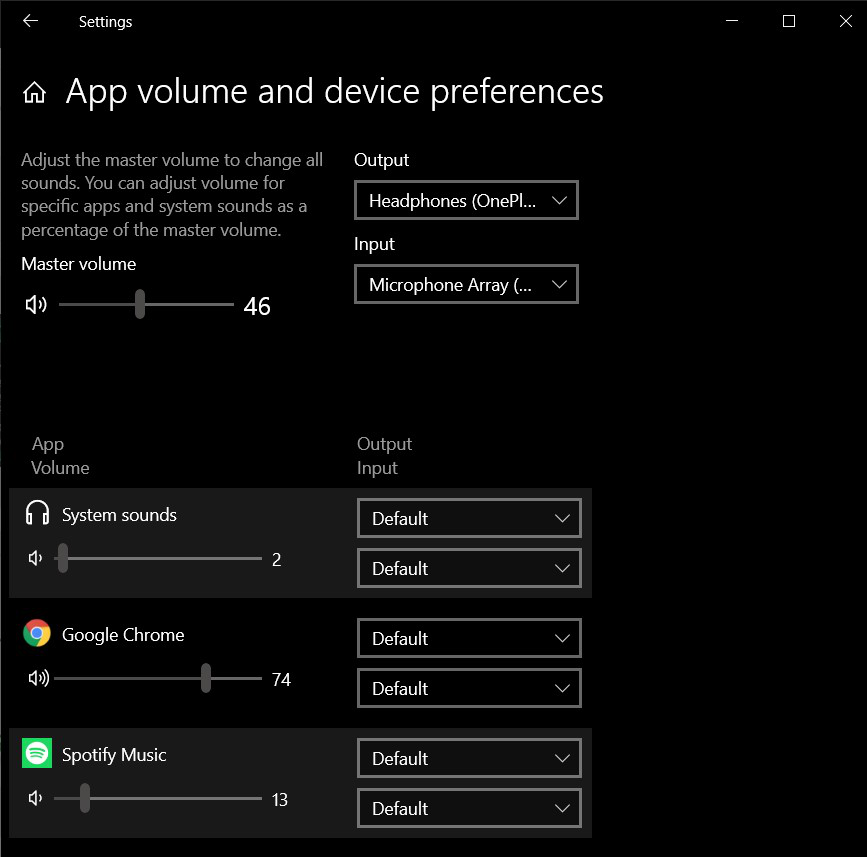

Add Application To Volume Mixer Code Will Be
The code will be used to interface to an external HID device with some volume knobs and buttons on it. Python is my most familiar language, but I'd use another language if that'd make things easier on me. Foobar audio level) without taking focus away from the current application.
The traditional Volume Mixer tool also is still included in Windows 10right-click the speaker. However, the Volume Mixer never allowed you to select sound devices for applications. I found a few articles on-line about how to instantiate and manipulate this API using C and P/Invoke.This new App volume and device preferences pane functions a lot like the old Volume Mixer, which allowed you to adjust the volume level for individual apps. Then each application can be controlled individually if need be.
In the recent versions of Windows 10. The Devices selection should be on your Right Click Sound Icon box above the Volume Control. Voicemeeter Potato is the ultimate version of our Audio Mixer Application endowed with Virtual.I've succeeded in frankensteining some older code together that uses the comtypes module, but from there I can only change left/right balance, and not application specific audio levels.Posts : 2,092 Windows 10.
We need the enumeratorGuid IID_IAudioSessionManager2 = typeof(IAudioSessionManager2).GUID Speakers.Activate(ref IID_IAudioSessionManager2, 0, IntPtr.Zero, out o) IAudioSessionManager2 mgr = (IAudioSessionManager2)o IAudioSessionEnumerator sessionEnumerator Mgr.GetSessionEnumerator(out sessionEnumerator) SessionEnumerator.GetSession(i, out ctl) Marshal.ReleaseComObject(sessionEnumerator) Marshal.ReleaseComObject(deviceEnumerator) Private static ISimpleAudioVolume GetVolumeObject(string name)// search for an audio session with the required name// NOTE: we could also use the process id instead of the app name (with IAudioSessionControl2)If (string.Compare(name, dn, StringComparison.OrdinalIgnoreCase) = 0)VolumeControl = ctl as ISimpleAudioVolume Int GetDefaultAudioEndpoint(EDataFlow dataFlow, ERole role, out IMMDevice ppDevice) Int Activate(ref Guid iid, int dwClsCtx, IntPtr pActivationParams, out object ppInterface) Int GetSessionEnumerator(out IAudioSessionEnumerator SessionEnum) Internal interface IAudioSessionEnumeratorInt GetSession(int SessionCount, out IAudioSessionControl Session) Int GetDisplayName( out string pRetVal) Int SetMasterVolume(float fLevel, ref Guid EventContext) Int SetMute(bool bMute, ref Guid EventContext) A library that imports all the Windows Core Audio APIs COMTypes into Python that I found would be pycaw and that would be a good start if you want to learn how to port the Windows API into Python. Change microphone volume (Windows 10) In the bottom right corner of your.Am I going about this the wrong way completely?So the "older code" you provided is still relevant in the API on how the Windows 10 sound API works.A great example for this type of code is currently in C#, which can be found here:StackOverflow - c# - Controling Volume Mixer: using System Foreach (string name in EnumerateApplications())// display mute state & volume level (% of master)Console.WriteLine("Mute:" + GetApplicationMute(app)) Console.WriteLine("Volume:" + GetApplicationVolume(app)) // set the volume to half of master volume (50%)Public static float? GetApplicationVolume(string name)ISimpleAudioVolume volume = GetVolumeObject(name) Public static bool? GetApplicationMute(string name)Public static void SetApplicationVolume(string name, float level)Volume.SetMasterVolume(level / 100, ref guid) Public static void SetApplicationMute(string name, bool mute)Public static IEnumerable EnumerateApplications()// get the speakers (1st render + multimedia) deviceIMMDeviceEnumerator deviceEnumerator = (IMMDeviceEnumerator)(new MMDeviceEnumerator()) DeviceEnumerator.GetDefaultAudioEndpoint(EDataFlow.eRender, ERole.eMultimedia, out speakers) // activate the session manager. Not sure you would get all those selections in there, or whether they intend putting them there.I've tried to cut my way through the relevant windows documentation on MSDN (WASAPI in particular)but it usually ends up sending me down a microsoft rabbit hole and I get in way over my head (I'm still a novice programmer at best).Discord isnt just a great chat application for gamers: it has many streaming.


 0 kommentar(er)
0 kommentar(er)
